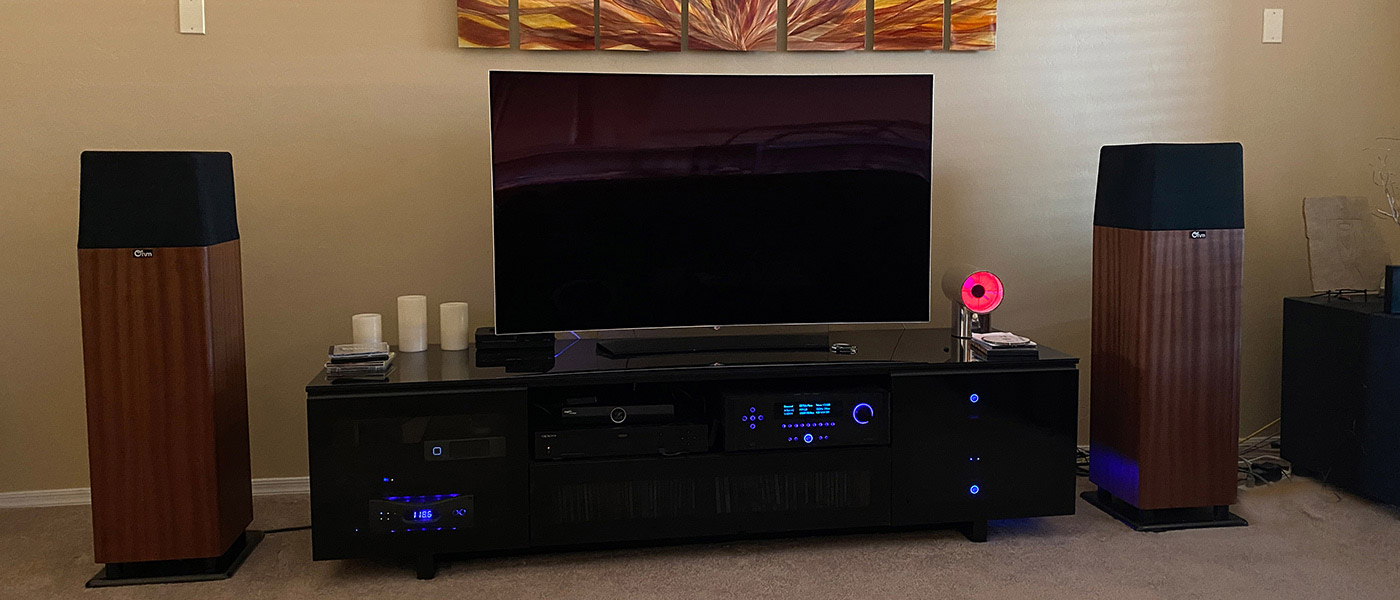The Olympica line of speakers really exhibits the essence of Sonus faber – striking design, cutting edge technology, and a clear, yet musical presentation of music. It’s been about seven years since the original release of the Olympica line but Sonus faber has never been a company to rest on their laurels. The entire series has been upgraded and has recently been released as the Olympica Nova collection.
While the original Olympica speakers were excellent, the new Olympica Nova V kicks things up a notch. Retaining a very similar sonic presentation to the Olympica IIIs, the larger Olympica Nova V have significantly better bass response, improved dynamics, more accurate imaging, and an increased sense of soundstage depth and height. All this has been done without compromising the very musical presentation of sound that I loved so much about the original Olympicas. Don’t think musical equals dull though, as the Olympica Nova Vs still present excellent detail with pretty much any source. And the cherry on top – they are built to a standard rarely seen and with an eye for design that few manufacturers can match.
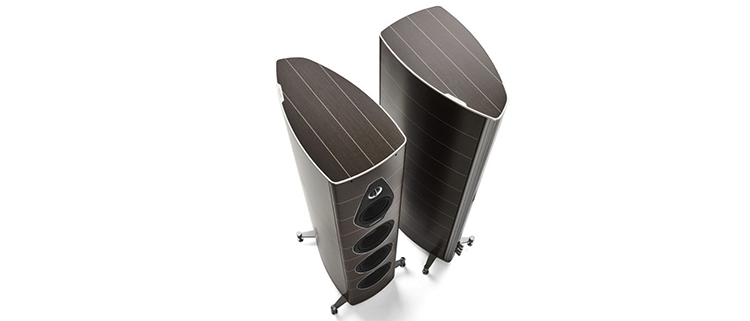
Sonus faber Olympica Nova V Tower Speaker
- Beautiful design and finish
- Accurate but not excessively bright treble response
- Great imaging and soundstage depth
- Reproduces dynamic swings even better than the original Olympicas
- New rear port makes getting great bass response easier
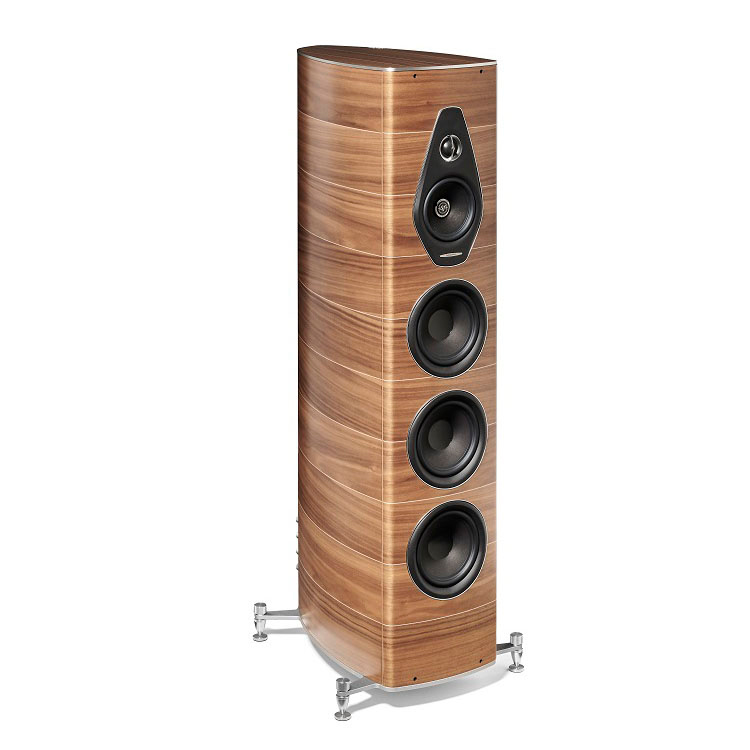
Design:
3-way ported tower loudspeaker
Drivers:
1x 28mm silk Damped Apex Dome™ tweeter, 1x 150mm natural fiber midrange, 3x 180mm woofers
Crossovers:
250Hz, 2,500Hz
Frequency Response:
32Hz-35kHz
Sensitivity:
90dB
Nominal Impedance:
4 ohms
Recommended Amplifier Power:
60-400W, without clipping
Dimensions (W x H x D):
16.7” x 46.3” x 20.8”
Weight:
97lbs each
Warranty:
5 years – parts and labor
MSRP:
$16,500
Company:
SECRETS Tags:
sonus faber, olympica nova v, tower speaker, full-range speaker
I’ve been enjoying a full surround setup of Sonus faber’s original Olympica line (Olympica IIIs, Center, and Is) in my personal media room for the past four years. When I saw the press release announcing that Sonus faber would be updating the entire lineup to the new Olympica Nova moniker, I was met with two conflicting feelings. First, there was excitement as I love to see what a company can do with a product update. Second, there was pure dread when I saw that there would be a tower speaker larger than my Olympica IIIs added to the lineup. Why dread? I didn’t know if I’d be able to resist the urge to upgrade. As much as I love my Olympica IIIs, the one thing I wouldn’t have minded was a bit more bass response. Apparently, I wasn’t the only one. Enter the new Olympica Nova V that we have here for review. While similar in design and execution to the original Olympicas, the Olympica Nova V bumps the woofer count from two 180mm drivers to three. There are also a host of updates throughout the speaker which incorporate much of what Sonus faber has learned in the seven years since the original Olympicas were released. Are the new Olympica Nova Vs a step up? Let’s find out.
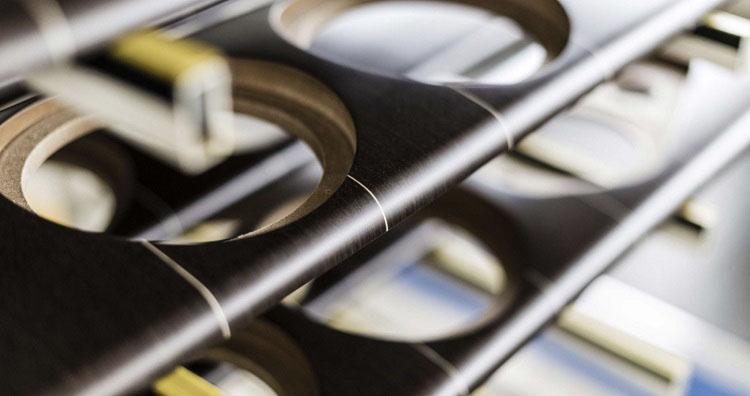


The Olympica Nova V looks much like the older Olympica III, but there are a few key differences. Most noticeable is that Sonus faber has removed much of the leather that was used on the original Olympicas. Instead of the front baffle being entirely covered in leather, now there is only a small leather surround on each driver. This allows more of the wood veneer to show. The top speaker panel now consists of a solid aluminum cap with wood inserted inside instead of the leather seen on the previous models. The leather that was on the back of the original Olympicas (running down the Ultraflex™ port) has also been nixed in favor of more wood on the Olympica Novas. Personally, I’m a bit torn on this design change. On one hand, we get to see more of the beautiful wood that has become a Sonus faber trademark. On the other hand, I think the larger quantity of leather on the original Olympicas offered more of a contrast in the design, breaking up the wood with a complimentary finish. Let me know what you prefer in the comments below. Sonus faber has also addressed one of my only criticisms of the original Olympica towers by changing the design of the bottom aluminum plinth. While the original Olympicas had a solid aluminum plinth that was integrated with the speaker’s body, the new Novas have moved to a solid aluminum bottom plate. This means that the issue I had with the spikes not being long enough to keep the bottom of the speaker body from hitting the carpeted floor in my media room has now been addressed without making the spikes longer. Basically, the new design picked up about 1.5” of extra clearance between the bottom of the speaker and any floor. The spikes are made from solid steel and feel incredibly solid. Sonus faber also includes high-quality floor discs to place under the spikes if you have a wood or tile floor to protect.
The new top and bottom aluminum plates serve as clamps along with the rear aluminum reflex plate. This design has been used on higher-end Sonus faber models and helps to increase cabinet rigidity. The cabinet side walls have changed from MDF construction to a constrained layer damping bended-wood process that uses eight layers of curved wood that are sandwiched together. Combined with revamped internal bracing and the aluminum exoskeleton, the cabinets on the new Olympica Novas are significantly stronger and less resonant. Rapping my knuckles on the sidewalls of the Olympica Nova Vs and then repeating the process on my Olympica IIIs showed how well this works as there was much less thunk and reverberation on the Olympica Nova V. The Stealth Ultraflex™ port on the rear of the speaker has also been completely redesigned, following what was done with Sonus faber’s Homage Tradition models. It is now integrated with the cabinet and is sandwiched between the top and bottom aluminum caps to further strengthen the cabinet. The two sets of five-way binding posts are now arranged vertically on the back of the tower, with the two positive terminals at the top and the two negative terminals on the bottom.
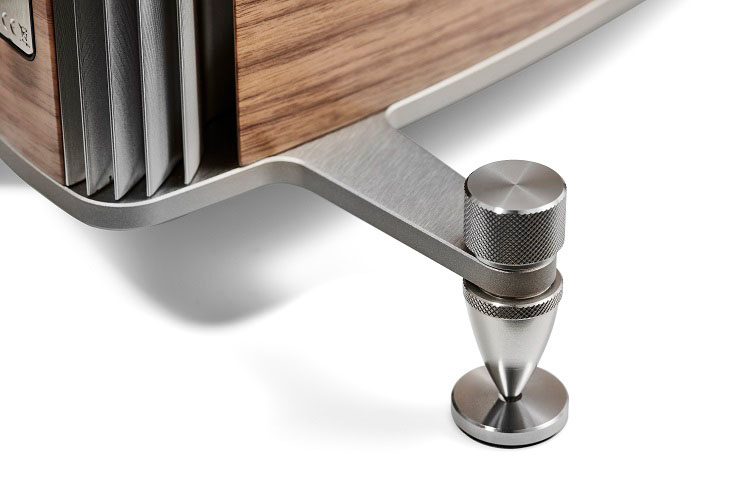
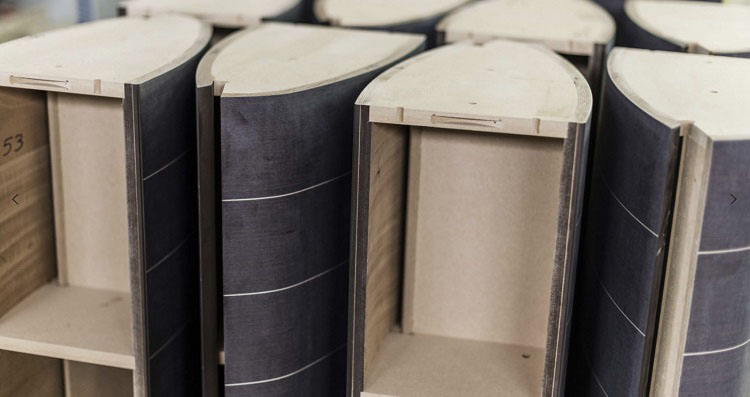
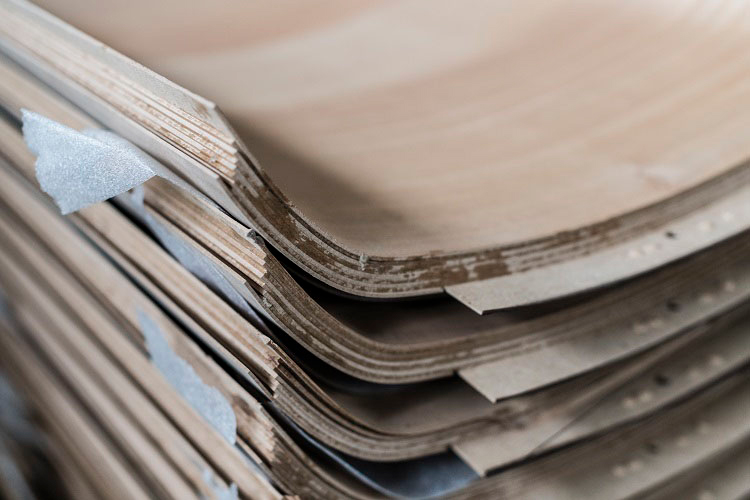
The drivers and internal electronics have also been tweaked. Starting with the 28mm Damped Apex Dome™ tweeter, the entire structure of the tweeter is now a single piece of die-cast aluminum, which creates a stronger foundation for the high-frequency range. The midrange driver is still made of cellulose pulp, Kapok, and Kenaf (all-natural fibers) but the driver has been tweaked following what was learned in designing the Homage Tradition line. Both the midrange and woofers have solid die-cast aluminum baskets, a Copper Clad Aluminum Winding (CCAW) voice coil, and an aluminum phase plug that is ringed with copper. The new phase plug is designed to minimize intermodulation distortion and enhance dynamics. The woofer cones are constructed of syntactic foam sandwiched between layers of cellulose pulp. I’d also like to point out that the dust caps on the drivers are no longer the very delicate soft domes that were on the original Olympica line, but a much firmer, flatter design. Considering the relative uselessness of the stringed grilles for protecting the drivers, those of you with small children/pets will appreciate this change. In my home, my toddler is constantly trying to poke the dust caps on my Olympica IIIs. He’s lucky that he’s so cute. With the new design, I don’t think he could do any damage if he tried. The Paracross Topology™ crossovers have also been updated, now sporting Clarity Cap capacitors that have been customized for Sonus faber.
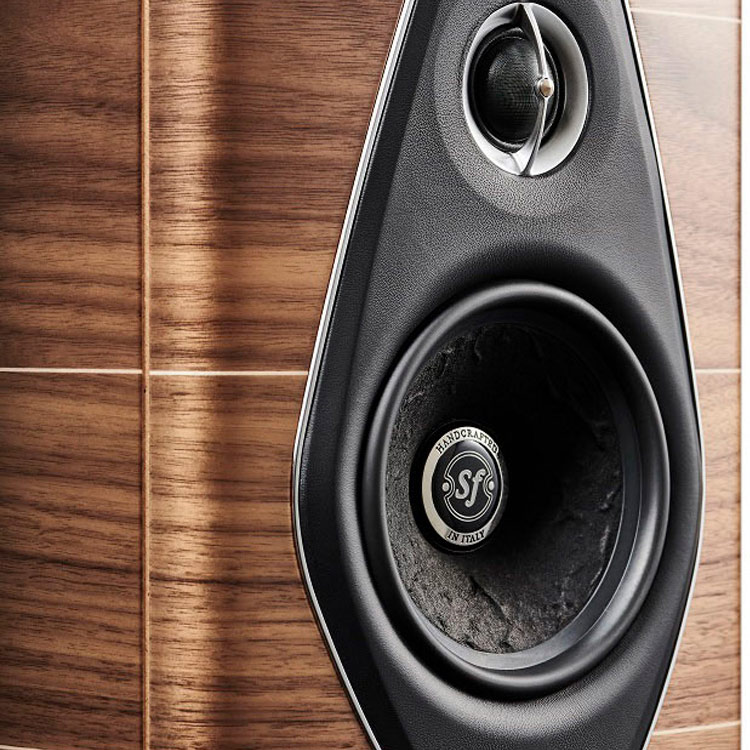

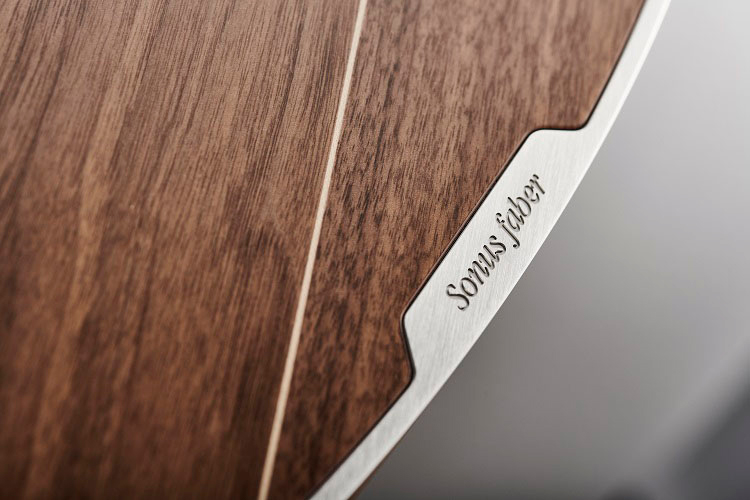
The traditional Sonus faber stringed grilles finish everything off. These are a very elegant look, but as I mentioned earlier, don’t do very much to protect the speaker from damage. They do very little harm to the overall sound, but I kept them off for my entire review period. There are two wood veneer finishes available for the Olympica Nova line – Walnut or Wenge. The Walnut is a fairly light brown option and the Wenge is a very dark brown with a touch of red/Mahogany. My Olympica Nova V samples were finished in the Walnut, and while beautiful, the new Walnut is a bit lighter in color than prior iterations of Sonus faber’s Walnut finish. Personally, I find the Wenge a much richer look and I love how the raw aluminum on the speaker grilles and top/bottom plates contrasts with the dark brown wood color. Both finishes are coated in Sonus faber’s ecologically sensitive satin finish, which cuts down on reflections. I would like to take a moment to plead for the return of the Graphite finish that was initially available on the original Olympicas (and that I purchased for my own setup). The Graphite was a very dark (almost black) charcoal grey that blended in very well with a large variety of decors. It was also very original, with no other manufacturer that I know of offering a similar color. A final visible change is how much more upright the Olympica Nova V stands than prior Sonus faber models. First done on the recent Homage Tradition line, Sonus faber now uses the internal crossover networks to time-align the drivers as opposed to physical rake on the front baffle.
Setting up the Olympica Nova Vs was easy once I got them up into my media room. The physical setup was very simple. Following the instructions on the cartons, I quickly had the Nova Vs out of their shipping cartons and roughly in place at the front of my room. I removed the metal jumpers on the speaker terminals so that I could hook up the bi-wired Kimber 4VS cables I typically use to my Wyred4Sound multichannel amp. The amplifiers for the left and right front channels are putting out roughly 525W at 8 ohms, and more than a kilowatt (1000W) at the Olympica Nova V’s 4-ohm resistance level. The amp was connected to a Marantz AV8801 via XLR cables. I ran the Marantz in Pure Direct mode for the entire review period with the Olympica Nova Vs set to be run full range in the speaker settings. I used my OPPO UDP-205 to play all the media for this review, whether CD, high-resolution disc (SACD, DVD-Audio), FLAC, or DSD files via the OPPO’s USB inputs. My Hsu Research VTF-3 Mark II and ULS-15 Mark II subs rounded out the configuration. I ran the speakers for about two weeks straight to break them in, but I didn’t notice any difference in the sound after about 50 hours of playback. Treble and midrange clarity seemed to improve in those initial 50 hours, but the difference was subtle. Bass response improved more dramatically in those early hours of use, sounding like a few extra Hertz of lower-end thump was added once the woofers loosened up a bit.

I started with the speakers roughly positioned where I’d had my Olympica IIIs for the past few years. I only had to move them slightly to get the Olympica Nova Vs sounding their best. To set positioning, toe, and rake, I used “I Forgive You” from Rachelle Ferrell’s “Individuality” (CD: Capitol B00004W55E).
Listening to one speaker at a time, I fine-tuned the speaker position, toe, and rake to get the best sense of overall tonal balance, imaging, and sound-staging. Given the extra bass driver, I thought I might have to move the speakers further out into my room to cut down on bass bloat. This turned out to be unnecessary. Whether due to the changes in the Stealth Ultraflex™ port or just a better match with my room, bass bloat wasn’t an issue. The speakers ended up about the same distance from my back walls at about 2.5 feet away and 3.5 feet from the side walls. This put the front baffles 10.5 feet from my ears. Distance between speakers was 9.5 feet so I was close to the equilateral triangle shape that Sonus faber recommends for best sound. I wound up with the speakers toed in so that they converged at a point roughly one foot behind my head. This seemed to give the best imaging without any excess brightness in the treble. If you are someone who likes a bit more treble response, try aiming the speakers directly at your listening position. This cuts the sound staging a touch but increases the perceived treble. I used the included adjustable feet to set the rake so that the tweeters fired slightly upward towards ear-level. This required very minimal deviation from the stock rake angle. I didn’t notice any issues with time-alignment of the multiple drivers. Everything sounded tight and well-integrated.
After using “Individuality” to help set everything up, I knew my review period with the Olympica Nova Vs would be a real treat. I focused my listening sessions on some of my favorite high-resolution audio. These are tracks I have heard numerous times on multiple systems (including my own) so I could really see what the Olympica Nova Vs bring to the table. A lot of these tracks are 5.1 surround versions, but the Olympica Nova Vs matched the tonality of my existing Olympica Center and Olympica I surround speakers so well that I just went with the surround version instead of the two-channel options.
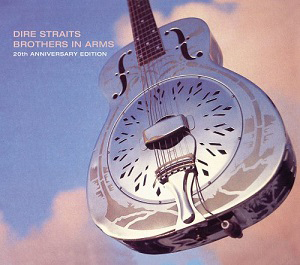
I started off with the DVD-Audio version of Dire Straits “Brothers in Arms” (DualDisc/DVD-A: Warner Bros/Wea B0009WFF7M). If you haven’t heard the 96/24 MLP-encoded version of this hallmark of 80’s rock releases, go on over to eBay to find a copy..
“Money for Nothing” is still my favorite cut on this album and it sounded absolutely glorious through the Olympica Nova Vs. Right from the start the intro “I want my MTV” line sounded so clearMark Knopfler’s vocals were reproduced with perfect tone and timbre. There was a weight and fullness to them that is missing on the CD version of this album. The signature guitar riff sounded great, again possessing a richness that was never quite reproduced on the CD (or even vinyl) versions of this album I have heard. You can more fully flesh out what sounds like a partially engaged Wah pedal (though there is much debate on this) that was used to create the unique guitar tone used during recording. That cool synthesizer effect that zings through the song numerous times really projected out from the Olympica Nova Vs, filling the space above and to the sides of the front speakers. The bass was exceptionally tight, with really solid thwack to eat drum hit. Cymbal and high-hat crashes were very airy, showing off the tweeter to great effect.
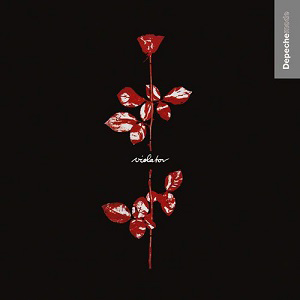
Moving on to another high-res favorite of mine found even more great sound from the Olympica Nova Vs. Depeche Mode’s “Violator” was treated to a re-release a few years back with a 96kHz/24-bit DTS 5.1 track (there is also an SACD version out there too).
This is far and away the best way to hear this innovative record, with a level of clarity and detail that are just not present on any other release.From the opening ding sounds on “Personal Jesus” I was thoroughly engrossed in the sound. Those intro dings sounded much larger than I’ve heard them before, filling up the front soundstage. The subtle frog synth notes that play in the background (you know, the ones that sound like a croaking frog) were so much clearer and easier to hear. The midrange presentation was spot on, with Dave Gahan’s unique vocals coming through with amazing clarity and body. While the bass is not very deep on this track, it hits hard and remained completely tight via the Nova Vs. The prevalent synth notes throughout the song sounded smooth and full-bodied. The big sound stage presented by the Olympica Nova Vs was prevalent here. Later in the song, there is a moment that sounds like someone hyper-ventilating. To me, this sounded incredibly realistic. In fact, the whole album has a beautifully smooth, organic quality to it that was really put on display by the Olympica Nova Vs. Big and powerful is how I would describe the overall presentation, with wide dynamic swings. The Nova Vs are incredibly quick on their feet, going from quiet, subtle sounds to big moments with ease. I wound up listening to the whole album, marveling at just how good tracks like “Sweetest Perfection,” “Enjoy the Silence,” and “Policy of Truth” sounded. As engaging as my Olympica IIIs are, they don’t pull me into this album as much as the Olympica Nova Vs did.
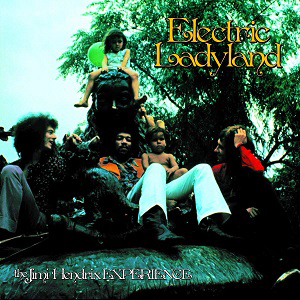
Next up were some of my favorite tracks from the recent 50th-anniversary edition of Jimi Hendrix’s “Electric Ladyland” (Blu-ray: Sony Legacy B07GGPT67F) and Linkin Park’s “Reanimation” (DVD-Audio: Warner Bros B00006L7MV).
The 5.1 LPCM 96kHz/24-bit mix on this latest release of Hendrix’s classic is awesome, even better sounding than the 96/24 two-channel releases included in the package, which sound a bit lifeless in comparison. “Voodoo Chile (Slight Return)” is one of my favorites on this remaster and it sounded quite impressive with the Olympica Nova Vs in my system. Jimi’s vocals were flawless, capturing the overall tone of his voice and slight grit perfectly. Jimi’s classic overdriven guitar tone was perfectly reproduced. What was really neat was how I could easily discern the phaser effect (at least I think it is a phaser pedal) that was being used on his rig. I could hear the swirling transition of the guitar from left to right channel clear as a bell. In fact, I could pick up on a few of the effect pedals that were in the signal path which say a lot about how much detail the Olympica Nova Vs could wring from a recording. For a guitar player like me, this was really cool. The drum cymbals on this track crashed with just the right amount of fizz and seemed to shimmer through my room. As with everything else I listened to, the bass drum hits were tight and punchy, really anchoring the song. This disc is a ton of fun to listen to, particularly if you are a Hendrix fan or just someone who enjoys some great classic rock.

I’ve used “Reanimation” as one of my go-to test discs for many years now. Not only is the 48kHz/24-bit MLP recording an amazing surround experience but this disc has some of the most punishing dynamics out there, with pummeling bass notes and some seriously angry vocals and guitar work. From the beautiful piano and violin notes on “Opening” to the extreme angst of tracks like “By_Myslf” and “Pts.Of.Athrty,” this disc has it all.
To really do this album justice you need a big system with big speakers. With the Olympica Nova Vs in my setup, I heard this disc like never before. The extreme bass notes hit exceptionally hard and got my couch vibrating. While a lot of that comes from the subs, I played through this album a second time with the subs turned off and was really impressed with what the Olympica Nova Vs could do on their own. They were easily reaching down to the 25Hz range with authority in my room with room gain. Not only that, I was able to get some serious air moving with just the towers dishing out the bass. Subs are certainly not required with these speakers. While the bass coming from the Olympica Nova Vs was impressive, the screaming vocals and heavily distorted guitars were handled with equal aplomb. The midrange and treble blended in seamlessly with the bass. Even at high volume levels (95dB+), the Olympica Nova Vs kept everything under control and coherent. There was no excessive harshness to the vocals or guitar parts, even though this album can come across that way on many other speakers. The harshness inherent in the recording was not polished away but kept in check just enough to allow me to listen at high volume without creating fatigue. I’ve listened to this album on many different systems and this was the most fun I’d ever had with it. Well done, Sonus faber. The Olympica Nova Vs can really rock.
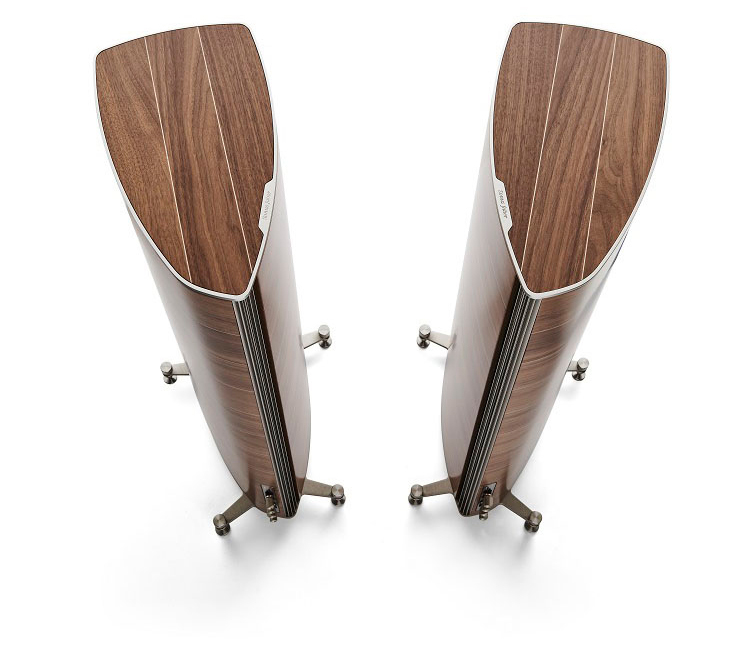
While the list price of $16,500 is beyond the realm of many, the Sonus faber Olympica Nova V is still a bargain in the rarefied air of high-end audio.
- Flawless construction quality
- Excellent bass response
- Beautifully rich and clear midrange
- Surprisingly flexible room placement
- Can handle tons of power
- Gorgeous finish options
- Bring back the Graphite finish!
- Find a way to make speakers like this affordable to the masses
Given their overall performance, exceptional physical beauty, and phenomenal build quality, you can spend a lot more for a great pair of tower speakers and get a lot less. Sonus faber has also created a full line-up of matching bookshelf, wall-mount, and center channel speakers for the Olympica Nova line, so if you want to build a stunning surround array, you can do so while maintaining perfect tone and timbre across all your speakers.
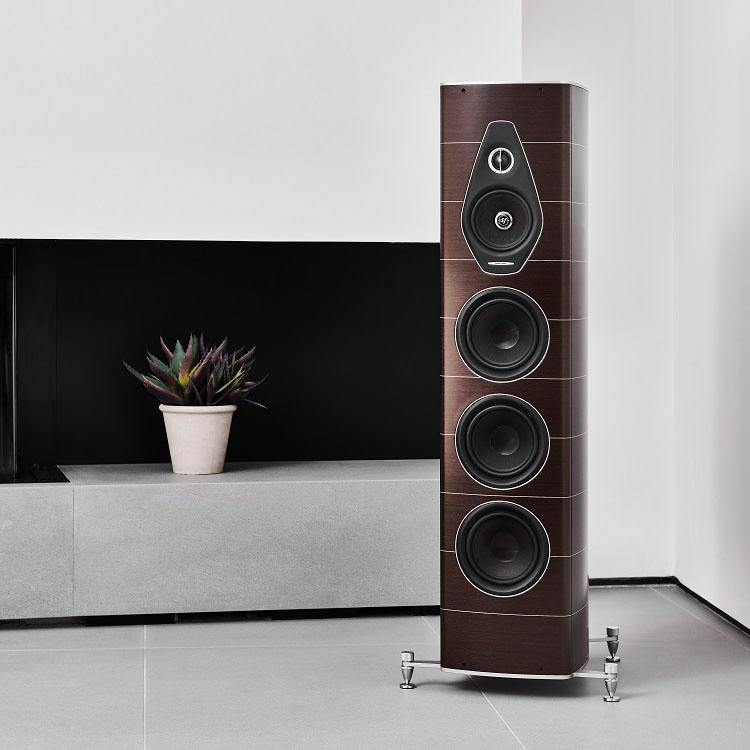
It pains me to say, but as much as I love the original Olympica IIIs that have anchored my media room setup for four years now, the new Olympica Nova Vs are superior in every way imaginable. The three woofers on the Olympica Nova Vs offer a significant improvement in bass output as well as depth. More surprising is that even with the additional bass, the Olympica Nova Vs were less sensitive to positioning in my room. This bass also seemed to blend better with the midrange, creating a more cohesive experience. The Olympica Nova Vs sound phenomenal with well-recorded classical and jazz yet can totally rock out if you prefer more dynamic styles of music, like EDM or Metal. The larger cabinet and improved construction seem to have made a fuller-bodied sounding speaker as well. Male and female vocals are handled with equal aplomb. Much like their predecessors, they present great detail and dynamics without crossing over towards harsh or clinical sound. In fact, they strike this balance even better than the original Olympicas. Imaging has been improved and the Olympica Nova Vs present a noticeably larger soundstage than their predecessors. If Sonus faber sees fit to bring the Graphite finish back, I don’t see how I’ll be able to resist upgrading my original Olympica IIIs. While these speakers are by no means cheap at $16,500 per pair, there are very few speakers out there under $20,000 that offer such beautifully detailed, full-bodied sound in such an attractive package. If you are shopping in this price range, I’d definitely give the new Olympica Nova Vs a serious audition.


